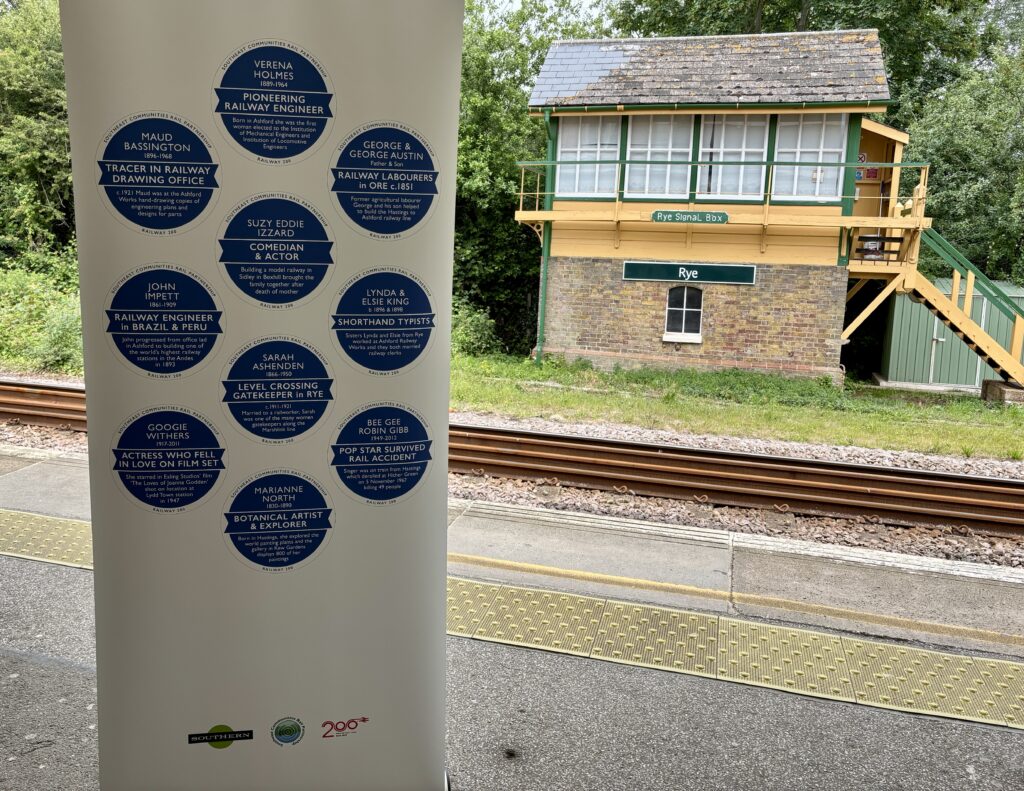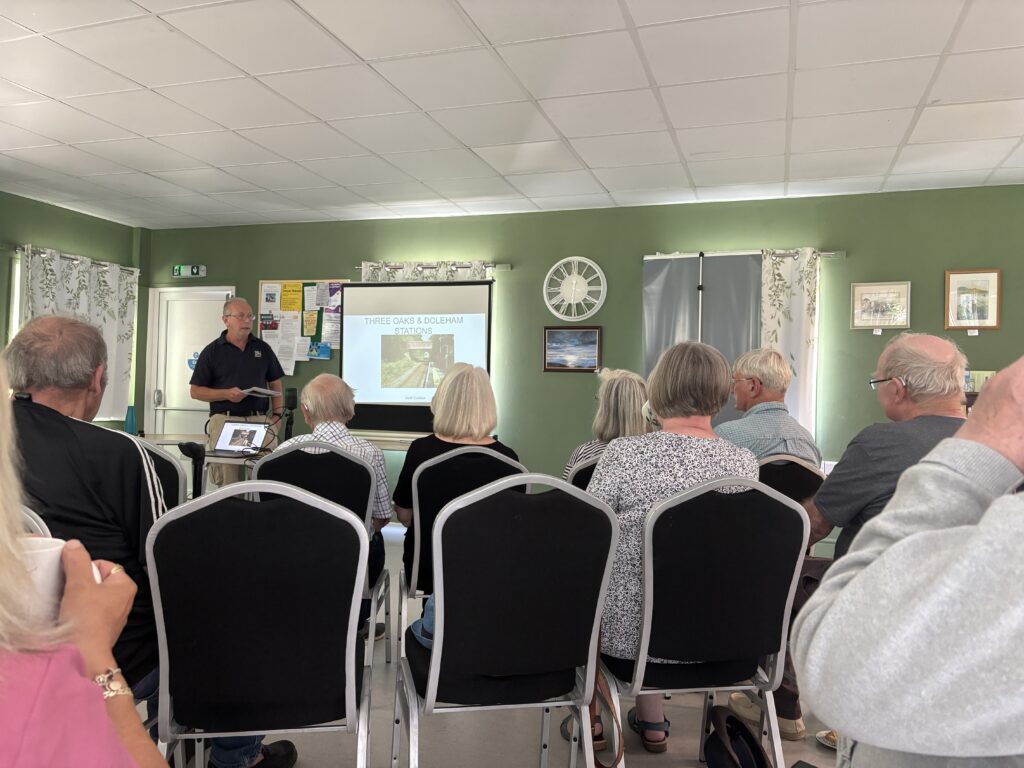A series of 10 ‘blue plaques’ have been displayed at stations between Hastings and Ashford International to recognise the wide range of people who have contributed to the development of the Marshlink rail route.
The partnership worked with researchers, historians, rail enthusiasts, archivists and community representatives to find people from all walks of life suitable for a ‘blue plaque’. Research was co-ordinated by Danny Coope from Street of Blue Plaques.
The ‘blue plaque’ project by Southeast Communities Rail Partnership is part of the national Railway 200 celebrations, marking 200 years of the modern passenger railway since the Stockton & Darlington Railway opened in 1825.
In total, Southeast Communities Rail Partnership will unveil 200 ‘blue plaques’ this year: 100 for people with historic links to the railways and 100 detailing modern jobs on the railways to encourage people to consider future careers.

The 10 Marshlink plaques were revealed at a special event on Tuesday 1 July to mark the 118th anniversary of the opening of Three Oaks and Doleham stations, where the first trains stopped there on 1 July 1907.
Author Keith Swallow delivered a well-attended talk highlighting his book, A Different Kind of Brotherhood: Guesting and Three Oaks, Then and Now, which includes a chapter on the coming of the railways and the impact of transport on the area.
The 10 plaques recognise a range of figures including railway personnel, actors, engineers, musicians and artists. View the full list here.
Kevin Boorman, Marshlink Line CRP chair, said: “We wanted to acknowledge the contribution made by the community to their railways. We have unearthed some wonderful stories of people who have helped to develop railways not just locally but globally.
“It is great that the hidden histories and unsung heroes and heroines are now being revealed alongside some of the better-known people with links to the Marshlink Line.”
Keep up to date with future news, projects and events from Southeast Communities Rail Partnership via their website.
